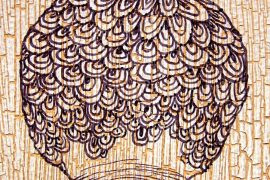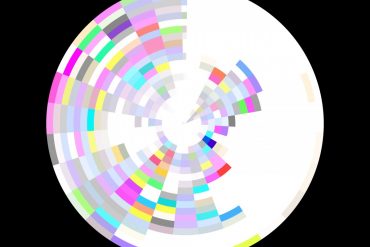The first poem in Kathmandu, “When Rajiv was blown up,” opens:
Before her belly would caress
and press the bomb in her sari,
she gave the man a garland
for his neck and bent
to touch his feet
The poem is about a scene—of Dhanu bending, clicking the trigger—that silent as well as violent moment just before the assassination of Indian Prime Minister Rajiv Gandhi on 21 May, 1991. Kathmandu is a narrative collection of poems that steal silence from moments when many things happen. The subcontinent has changed since that day in 1991, and Dhanu’s is a story that is seldom brought up. What we see is a flexible poem, much like the stories we tell children, except that this poem recounts a day of shock and horror with the gentleness of a child telling a story to the world, as if to corroborate:
I’d lived long enough to learn
of the inventions shared,
like the television and bombs,
blasting terror in tiny brains
As my mother bent to tuck me in bed
the night the woman blew up Rajiv,
I searched the pleats of her sari
for the shrapnel of fairy tales
If there is an image that stays throughout the collection of Kathmandu it is that of search—search for self, search for home, search for the precise moment of time where the world changed. As a reader I felt held through those pleats of sari, like a safety pin holding the sari, but also like the sari holding the safety pin. If one bends the safety pin, one can mold it into shapes, asking questions, stepping on period-shaped puddles, raising hands to talk about experiences of living in a violent period of Nepal’s history.*
The collection begins with observation, which attempts to respond like a plastic bag flying high in the air, carried by wind but also the materiality of the bag itself.
“Revolution, 2046 B.S.” is about a New Year spent in fear:
In the nights of ordered lights out,
when even the flicker of a candle
was a giveaway
I wrapped the torso of my doll
in an orange scarf
In this regard, Kathmandu is a collection of poems experiencing its way through the assassination-encountering political world and the plummeting economy of the 1990s, to a personal world of wounds and blackouts. One of the lines in “The royals, 2058 B.S.” says: “I said the assassination changes everything.”
“Nakabandi (Blockade)” is about the closeness of these panic-stricken worlds of children when it lays bare what we all had been thinking: “I’ve skipped homework to claim my spot.” This spot is a spot of crisis which shifts the narrative towards that of “leaving” Nepal. Of being “somewhere in between” with poems like “The first flight” and “Saffron.” The child who skipped school to be in that spot also skips her country to travel to America and make her spot there. In “The first flight” she mentions: “in the trunk, my two Samsonite suitcases swayed / instant noodles, notebooks, staplers, and pens too cramped to move.”
Leaving is a place where people are always arriving at. In the poem “Saffron,” the language of melting becomes an alternative vocabulary for this process of arriving somewhere and yet not leaving somewhere else:
How far is Houston from Victoria City?
prayers of my palm, poetry in my eyes
the sky is so big, the roads are so wide
I don’t melt here
my saffron, your orange
when I push carts and displace
cans from the shelves,
I ache, I stomp
my fingers create the rain
and reach for the milk
Ghimire’s poems are so big that the reader may feel like a swimmer without ever having learned to swim. There is grief for leaving—the aftermath of the earthquake, stories of disaster that leave us grappling with even more disasters, the agony of being away from one’s parents in a time of political unrest—but also future generations’ innocent hilarity of seeing themselves as god with four arms. One will laugh, but it will only come like a light splash of water. One is held by these poems that are so buoyant, even during moments as anxious and uncertain as earthquakes and blockades.
These poems also narrate the experience of travelling—from seeing the world as a child to the writer looking back at her relationship with her brother, watching her kids growing so fast near a window while reliving the memory of the Orlando Shooting, worrying for a parent in the midst of an unstable political environment, the disastrous earthquake of Nepal in 2015 where the faces of children haunted rescuers for days. From working in the U.S. and being made aware of “sounding different” to being a mother experiencing motherhood away from her home, these poems are about home, but also about growing up with many different worlds.
Going back home also gives us a poem. This is beyond seeing Everest twice in her poems or reading how her child goes to Kindergarten for the first time. When Ghimire talks about her brother, her voice isn’t sick for home. There are ways in which these poems spill stories without stopping. One may see this also in the way her poems end, with the absence of a period, and begin without the capital letter:
I could do anything for you, brother
So I didn’t burn the house for a meal
Now, love is all kinds of abstract
I go back
To when our afternoons didn’t have a twelve-hour layer
I lower the sun and place it outside the window
and push the stove’s lever
The flames cup the frying pan’s edges
as I break the lumps
now golden brown
I do not turn off the fire just yet
My brother is the brightest moon
Ghimire’s poems don’t forget the people in her life. “Lineage” draws a beautiful image of “moving places” and migration, conceiving a space that is filled with moving, a space of time that is filled with always moving. That poem uses the metaphor of universal objects—stars, sun, mountains, valleys. “[E]veryone in the galaxy forever looks down” is such a beautiful ending to a line that did not break. While reading, it feels like the poem is spreading throughout the page, and finally embracing the first line of the poem, where her grandmothers are stars.
In “A young woman says ‘I want to speak English like you,’” one discovers a striking image for the Hindi letter क—demon’s moustache. This is not the first time that South Asia has reflected on migration, but what is striking is the uncanny image Ghimire pulls out to illustrate her experiences of a language at work in everyday life. “For winter, for spring” is a poem naming familiar trees like apple, peepal, beginning with a species of plant, Karomia gigas. It is found in Kenya and Tanzania, where only small populations survive. In 2016, Botanic Gardens Conservation International found six Karomia gigas trees in one location in Tanzania. They employed local Tanzanians to guard the trees and report if there were any seeds so that they could be cultivated in a Tanzanian botanical garden. In this way, Ghimire’s poems present to form a world of ecology and bring a sharper tinge to the world of loss here. Ghimire’s writing is concerned about children growing in the world of absence of trees, not being able to remember the language of green, or of home twisting its shape on her tongue. Today, we are closer to a reality where Shere Khan may be all that is left of tigers. All this grief of disasters and unrest makes chaos feel like the next tree being cut down; it seems to be always arriving.
My favourite poem is “Twenty-five years later, I think happiness is understanding,” where the poet recounts the afternoon of visiting her grandfather three years back in Janakpur, and a drowsy evening filled with pigeons not flying too high because the grandfather had instructed them that way—“all the cows called him baa, too, and remembered their way home.”
The softness of Anuja Ghimre’s world is deeply rooted in ecology and a language of freedom. Like the pigeons in Janakpur, her poems do not distrust chaos, but accept and converse with it. Acceptance leads to the mind discovering fulfilment, even though one exists in a world that is always-already falling apart.
*: …the first five poems—”When Rajiv was blown up,” “Revolution, 2046 B.S.,” “Nakabandi (Blockade),” “The royals, 2058 B.S.,” “The first flight,” and “Saffron”—are like one continuous poem, being framed in all these forms to explore so many different emotions and situations that arise out of one important thing—the political situation in Nepal at that time. In this regard, I found the safety pin to be a recurring image while reading this collection. It is also true that many times safety pins rust and change shape…in this way, the safety pin’s changeability reflects the exploration that these poems are doing.





